D-Thyroxine monosodium salt
- CAS NO.:137-53-1
- Empirical Formula: C15H12I4NNaO4
- Molecular Weight: 800.87
- MDL number: MFCD00063057
- EINECS: 205-301-2
- SAFETY DATA SHEET (SDS)
- Update Date: 2022-12-21 16:56:50
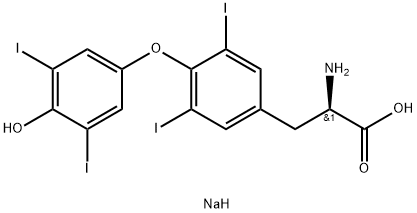
What is D-Thyroxine monosodium salt?
Originator
Choloxin,Knoll
The Uses of D-Thyroxine monosodium salt
Antihyperlipidemic.
The Uses of D-Thyroxine monosodium salt
D-Thyroxine sodium salt (CAS# 137-53-1) is a persistent and bioaccumulative pharmaceutical, and the sodium salt form of D-Thyroxine (T425605), a hormone involved in the maintenance of metabolic homeostasis.
Manufacturing Process
The synthesis of dextrothyroxine includes 10 steps:
1. 3-Iodo-5-nitro-4- [4-methoxy-phenoxy]benzaldehyde
2. 2-Methyl-4-[3-iodo-5-nitro-(4-methoxy-phenoxy)-benzylidene]-4-H-oxazol5-one
40 g above prepared derivate was heated with 12 g acetic acid and 10 g dry
sodium acetate in 70 ml acetic anhydride for 2.5 hours at 100°C. On cooling
the oxazolone precipitated. It was filtered off, washed with CCl4 and water;
next it was recrystallized from benzene. Yield 35 g. MP: 205°-206°C.
3. Methyl ester 3-iodo-5-nitro-4- [4-methoxy-phenoxy]-αacetylaminocinnamonic acid
20 g the product from an item 2 was stirred with a solution of 1.2 g sodium in
200 ml methanol at 20°C. Soon the desirable ester began to fall. It was
filtered off after adding of 5 ml 95% acetic acid and recrystallized from 95%
acetic acid. Yield 18 g; MP: 216°C.
4. Methyl ester 3-iodo-5-amino-4- [4-methoxy-phenoxy]-αacetylaminocinnamonic acid
25 g Raney nickel was added to the suspension of 67 g above nitro ester in
450 ml methanol. Whereupon about 8.55 L hydrogen was passed (2 hours),
the hydrogenation product crystallized. It was filtered off. The catalyst was
removed by dissolving in tetrahydrofuran and repeated filtration. The solvent
was removed in vacuum. Yield 38 g; MP: 184°C (recrystallized from
methanol).
5. Methyl ester 3,5-diiodo-4- [4-methoxy-phenoxy]-α-acetylaminocinnamonic
acid
5 g the product from item 4 in 20 ml 95% acetic acid and 30 ml conc. H2SO4
was dropwise added to the solution of 1.1 g sodium nitrite in 15 ml conc.
H2SO4 and 30 ml conc. acetic acid. After 30 minutes the solution of diazonium
salt was added to the mixture of 3.5 g KI, 5.2 g I2 and 2.0 g urea in 250 ml
water and 30 ml CHCl3.
The excessive iodine was removed with NaHSO3, an organic layer was
separated and distilled off to dryness. The residue was recrystallized from
acetic acid to yield 3.9 the desired product. MP: 209°C.
150 ml acetaldehyde was dropwise added to 150 ml HI (d 1.70) by ice
cooling. Then 0.1 g FeSO4 and 18 g red phosphorous was added to 27 g
diiodo-derivate from the step 5. The mixture was heated to reflux about 20
minutes. Simultaneously methyl iodide was distilled off. Red phosphorous was
filtered off. The clear filtrate was distilled to dryness. The residue was
dissolved in 150 ml of hot water and 100 ml 2 N HCl. The conc. NH3 was
added. Precipitated product was washed with water, methanol and acetone
and dried. Yield 20.7 g (86%). MP: 256°C (decomp.).
7. DL-N-Formyl-3,5-diiodothyronine
100 g DL-3,5-Diiodothyronine was added to the mixture of 100 ml dry formic
acid and 50 ml acetic anhydride by stirring at ambient temperature to give the
clean solution. Soon DL-N-formyl-3,5-diiodothyronone begun to crystallize.
Yield 95 g. MP: 225°-230°C.
8. (-)-D-N-Formyl-3,5-diiodothyronine
The above prepared DL-N-formyl-3,5-diiodothyronine was in 1500 ml of dry
isopropanol heated on a steam bath heated and the hot solution of 300 g dry
brucine in 1500 ml dry isopropanol was added. On cooling (+/-)-D- N-formyl3,5-diiodothyronone-brucine salt precipitated during 3 hours. 290 g this salt
was recrystallized from a mixture of 1 L dimethylformamide and 2.5 L
isopropanol. MP: 271°C. It was dropped into 750 ml 2 N NH3, four times with
methylene chloride extracted for brucine removing. Water-basic solution was
acidified to pH 2 with conc. HCl. (-)-D-N-Formyl-3,5-diiodothyronine
precipitated on cooling. Yield 140 g (96.5 %). MP: 186°C.
9. (-)-D-3,5-Diiodothyronine
It was prepared from 100 g (-)-D-N-formyl-3,5-diiodothyronine and mixture of
1 L 48% HBr and water (1:2). Yield 80.5 g MP: 252°C (decomp.). [α]D20: -
25.0° (c=5, in 1 N HCL/95% ethanol 1:2)
10. (-)-D-3,5,3',5'-Tetraiodothyronine (dextrothyroxine)
9 g (-)-D-3,5-diiodothyronine was dissolved in 80 ml 40% methylamine by
stirring at room temperature. 34 ml 1 N iodine/KI was added slowly to this
solution. After 1.5 hours stirring, 150 ml NaCl solution was added and a
sodium salt precipitated. It was dissolved in mixture of 200 ml methanol and
20 ml 2 N HCl, and heated with an animal coal. The coal was filtered off and
neutralized with solution sodium acetate to pH 6. The precipitated was filtered
off, washed with methanol and acetone and dried. Yield of desired product 6.2
g; MP: 235°C; [α]D25:- 14.6° (c=5, in 1 N HCl/95% ethanol 1:2).
brand name
Choloxin (Abbott).
Therapeutic Function
Thyroid hormone, Anticholesteremic
General Description
Dextrothyroxine sodium,O-(4-hydroxy-3,5-diiodophenyl)-3,5-diiodo-D-tyrosinemonosodium salt hydrate, sodium D-3,3 ,5,5 -tetraiodothyronine(Choloxin), occurs as a light yellow to buffpowder. It is stable in dry air but discolors on exposure tolight; hence, it should be stored in light-resistant containers.It is very slightly soluble in water, slightly soluble in alcohol,and insoluble in acetone, chloroform, and ether.The hormones secreted by the thyroid gland have markedhypocholesterolemic activity along with their other wellknownactions. The finding that not all active thyroid principlespossessed the same degree of physiological actionsled to a search for congeners that would cause a decrease inserum cholesterol levels without other effects such as anginapectoris, palpitation, and congestive failure. D-Thyroxineresulted from this search. At the dosage required, however,L-thyroxine contamination must be minimal; otherwise, itwill exert its characteristic actions. One route to opticallypure (at least 99% pure) D-thyroxine is the use of an L-aminoacid oxidase from snake venom, which acts only on theL-isomer and makes separation possible.
Clinical Use
D-Thyroxine monosodium salt potentiates the action of anticoagulants suchas warfarin or dicumarol; thus, the dosage of the anticoagulantsused concurrently should be reduced by one third andthen, if necessary, further modified to maintain the prothrombintime within the desired limits.
Safety information for D-Thyroxine monosodium salt
New Products
4-Fluorophenylacetic acid 4-Methylphenylacetic acid N-Boc-D-alaninol N-BOC-D/L-ALANINOL Tert-butyl bis(2-chloroethyl)carbamate 3-Morpholino-1-(4-nitrophenyl)-5,6-dihydropyridin- 2(1H)-one Furan-2,5-Dicarboxylic Acid Tropic acid S-2-CHLORO PROPIONIC ACID ETHYL ISOCYANOACETATE 2-Bromo-1,3-Bis(Dimethylamino)Trimethinium Hexafluorophosphate (6-METHYL-[1,3]DITHIOLO[4,5-b]QUINOXALIN-2-ONE INDAZOLE-3-CARBOXYLIC ACID 4-IODO BENZOIC ACID (2-Hydroxyphenyl)acetonitrile 4-Bromopyrazole 5,6-Dimethoxyindanone 2-(Cyanocyclohexyl)acetic acid 4-methoxy-3,5-dinitropyridine 2-aminopropyl benzoate hydrochloride 1-(4-(aminomethyl)benzyl)urea hydrochloride diethyl 2-(2-((tertbutoxycarbonyl)amino) ethyl)malonate tert-butyl 4- (ureidomethyl)benzylcarbamate Ethyl-2-chloro((4-methoxyphenyl)hydrazono)acetateRelated products of tetrahydrofuran

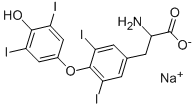
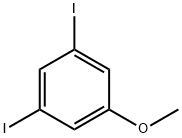

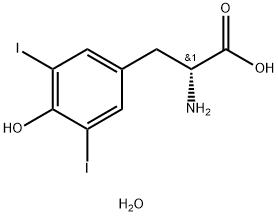
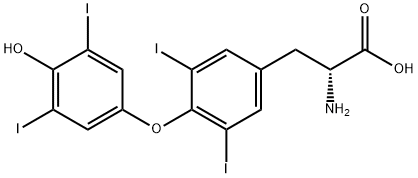
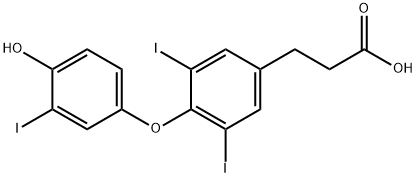

You may like
-
 D-Thyroxine monosodium salt, 97% CAS 137-53-1View Details
D-Thyroxine monosodium salt, 97% CAS 137-53-1View Details
137-53-1 -
 2033-24-1 98%View Details
2033-24-1 98%View Details
2033-24-1 -
 1975-50-4 98%View Details
1975-50-4 98%View Details
1975-50-4 -
 2-HYDROXY BENZYL ALCOHOL 98%View Details
2-HYDROXY BENZYL ALCOHOL 98%View Details
90-01-7 -
 2-Chloro-1,3-Bis(Dimethylamino)Trimethinium Hexafluorophosphate 221615-75-4 98%View Details
2-Chloro-1,3-Bis(Dimethylamino)Trimethinium Hexafluorophosphate 221615-75-4 98%View Details
221615-75-4 -
 61397-56-6 CIS BROMO BENZOATE 98%View Details
61397-56-6 CIS BROMO BENZOATE 98%View Details
61397-56-6 -
 14714-50-2 (2-Hydroxyphenyl)acetonitrile 98+View Details
14714-50-2 (2-Hydroxyphenyl)acetonitrile 98+View Details
14714-50-2 -
 118753-70-1 98+View Details
118753-70-1 98+View Details
118753-70-1